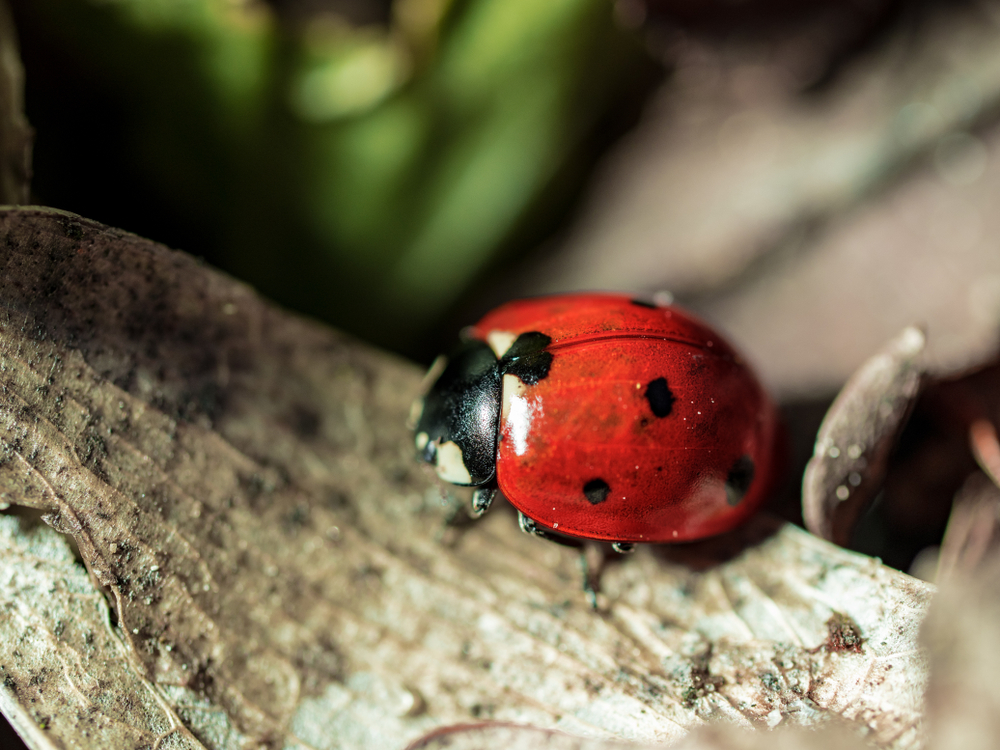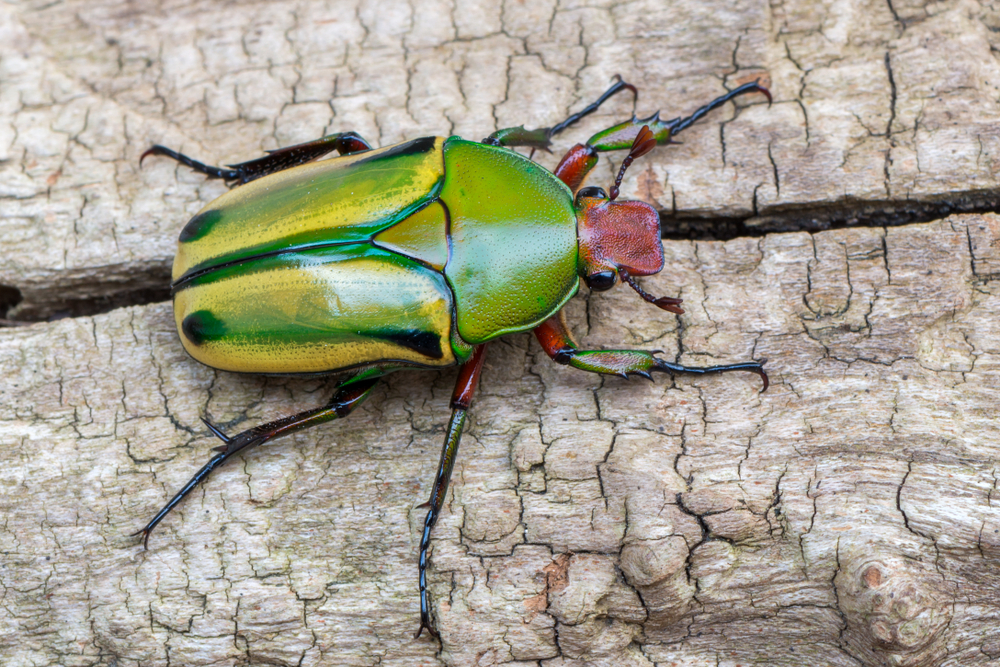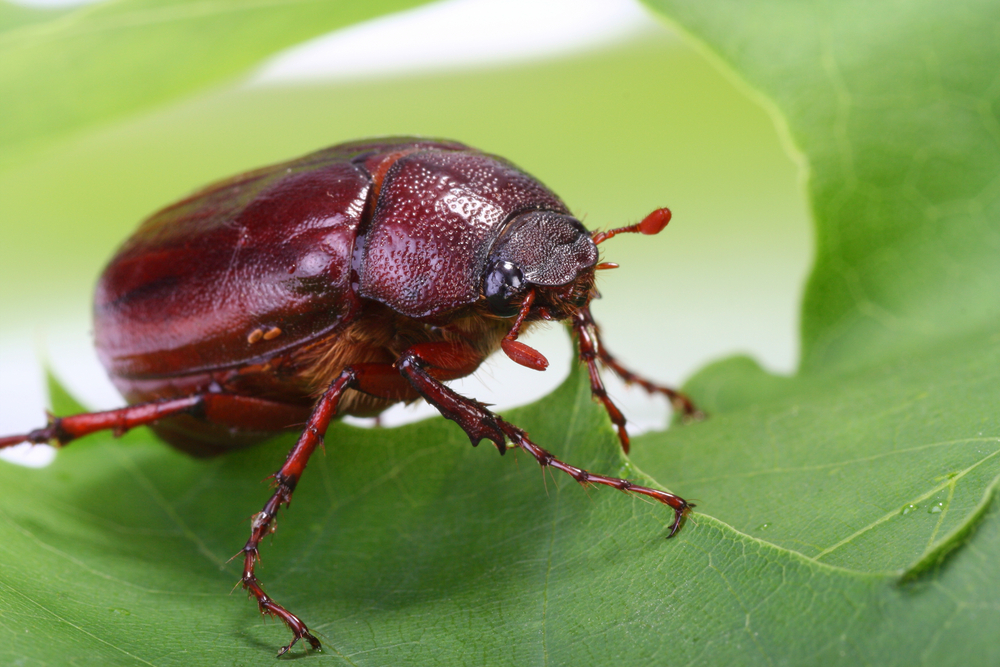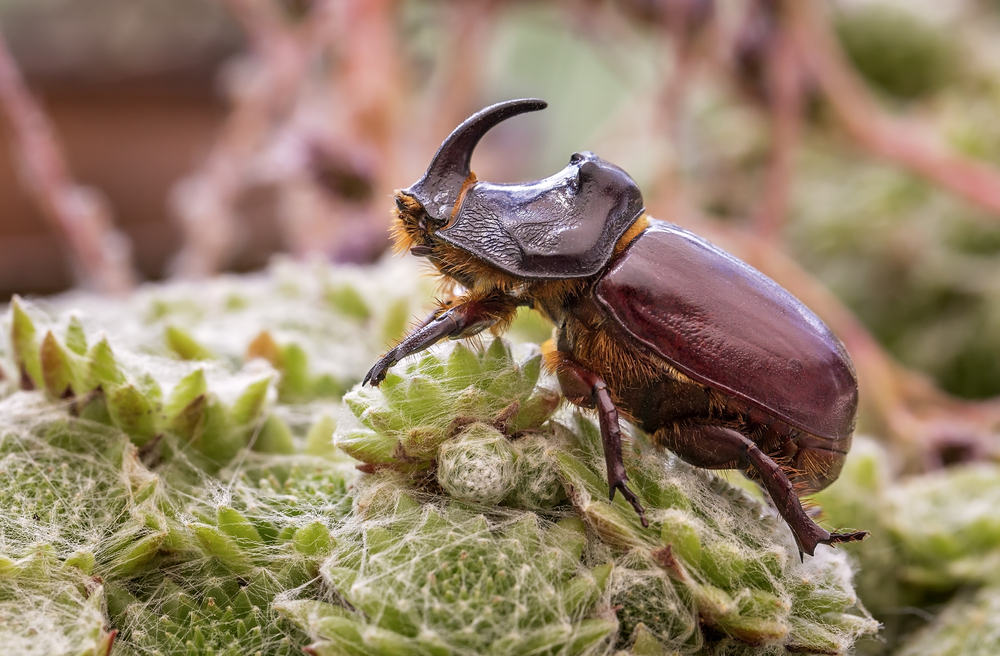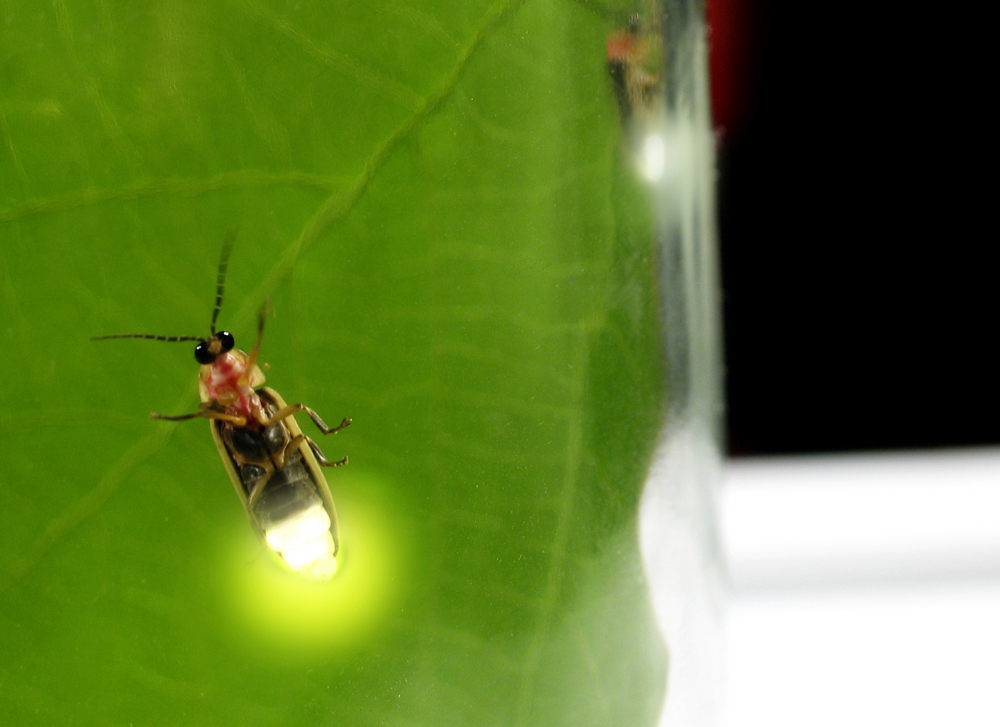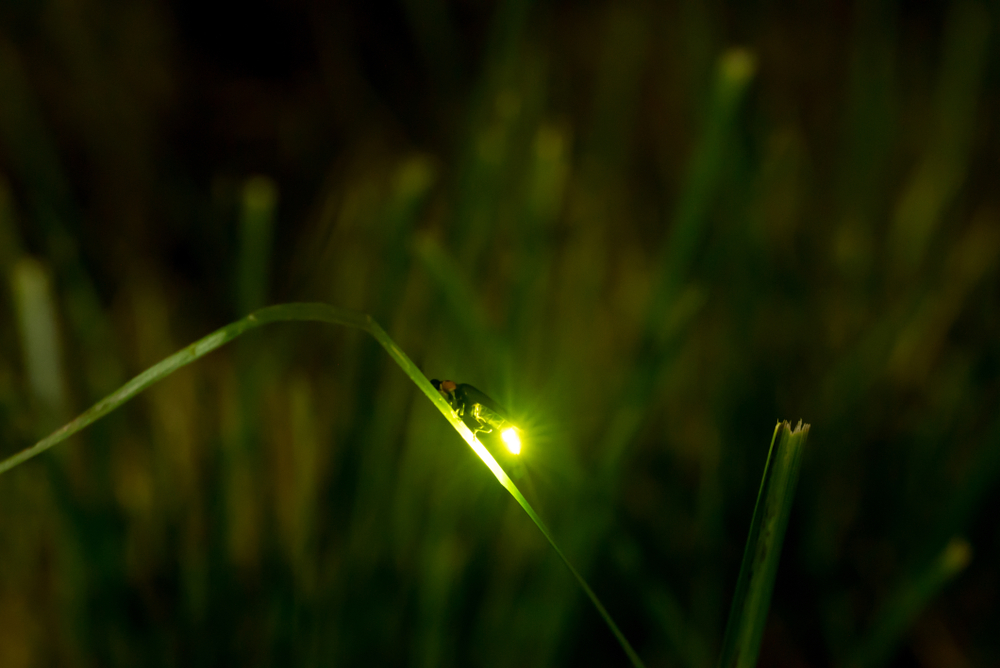There are approximately 2,000 known species of fireflies worldwide, each with its unique characteristics and bioluminescent displays.
About
Fireflies, also known as lightning bugs, are enchanting insects belonging to the family Lampyridae within the order Coleoptera, the beetle order of the Animal Kingdom. Renowned for their unique ability to produce light, fireflies inhabit various environments across temperate and tropical regions, gracing the night with their luminescent displays. This magical bioluminescence is not just a spectacle but serves vital biological functions, including mating communication and predator deterrence.
Fireflies encompass a diverse group, with over 2,000 species displaying a range of light patterns, colors, and habitats. These beetles are generally small to medium-sized, with soft, elongated bodies. While the glowing abdomen of fireflies is their most famous feature, they also possess compound eyes, which are highly sensitive to light, and antennae that help them navigate and communicate within their environment.
Fireflies undergo complete metamorphosis, transitioning from egg to larva to pupa and finally to the glowing adult. Their life cycle, bioluminescent abilities, and ecological roles make them a fascinating subject of study and an iconic symbol of natural wonder. Fireflies not only captivate the imagination but also highlight the intricate interplay of biology, chemistry, and ecology in the natural world.
Conservation Concerns
Despite their enchanting presence, Fireflies face numerous conservation concerns, including habitat loss, light pollution, and pesticide use. Urbanization and agricultural expansion have led to the destruction and fragmentation of Firefly habitats, reducing the availability of suitable breeding and foraging grounds.
Light pollution from artificial sources such as streetlights, buildings, and vehicles can disrupt Fireflies’ ability to communicate and find mates, leading to declines in their populations. Pesticide use in agriculture and landscaping can also harm Fireflies directly or indirectly by reducing their prey populations and contaminating their habitats.
Physical Characteristcs
Fireflies, or lightning bugs, are recognized for their distinctive appearance, characterized by their soft-bodied, elongated form and their capacity for bioluminescence. They typically have small, rounded heads with prominent, compound eyes that are well-adapted to nocturnal life. Their antennae vary in size and shape but are crucial for sensing their environment. The most iconic feature of fireflies is their light-producing organ located in the lower abdomen, which emits a gentle, glowing light in patterns that are unique to each species.
Physical characteristics such as size and weight of fireflies can vary among different species within the Lampyridae family, but they are generally small insects:
- Size:
- Length: Fireflies range from about 0.2 inches to 1 inch in length (5 mm to 25 mm), with most species measuring between 0.5 to 0.8 inches (12 to 20 mm).
- Width and Height: Their width and height are proportionate to their length, contributing to their slender and soft appearance.
- Weight:
- Fireflies are extremely lightweight, typical for insects of their size. They usually weigh just a few milligrams (a fraction of an ounce), making precise measurement challenging outside of a scientific setting.
The gentle glow of fireflies, combined with their delicate form and graceful flight, makes them a symbol of the beauty and mystery of nature. Their unique light-producing ability not only sets them apart in the insect world but also plays a crucial role in their survival and communication.
Reproduction
Fireflies have a fascinating reproductive cycle that is particularly notable for the use of bioluminescence in mating displays. The cycle includes the stages of egg, larva, pupa, and adult, with significant variations depending on the species. Here’s a general overview:
- Mating: Adult fireflies use their bioluminescent abilities to attract mates. Males typically fly around emitting a species-specific pattern of light flashes, while females, often perched on vegetation, respond with their own flashes. This light-based communication is crucial for mating.
- Egg-Laying: After mating, female fireflies lay eggs in or on the ground, often in moist areas that are conducive to larval development. The number of eggs laid can vary widely among species, but it generally ranges from a few dozen to over a hundred.
- Gestation Period: The gestation period, or the time it takes for the eggs to hatch, typically lasts a few weeks, depending on environmental conditions such as temperature and humidity.
- Larval Stage: Firefly larvae are often called glowworms because they also possess bioluminescent organs. The larvae are predators, feeding on snails, slugs, and other small invertebrates. This stage can last from one to two years, depending on the species and climate. Larvae undergo several instars, molting and growing larger with each stage.
- Pupation: After reaching a certain size and maturity, larvae pupate, transforming into adults. The pupal stage lasts for 2-3 weeks, during which the larva undergoes metamorphosis into its adult form.
- Emergence of Adults: Adults emerge from the pupal stage, and the cycle of light-based communication and reproduction begins anew. The adult stage typically lasts for several weeks, during which the fireflies mate and lay eggs before their life cycle ends.
Fireflies are unique in their use of bioluminescence for communication and mating. Their reproductive cycle, particularly the larval stage, plays a role in controlling pest populations, as the larvae are voracious predators of garden pests like snails and slugs. The entire life cycle of fireflies, from the glowing larvae to the light-displaying adults, highlights the intricate and interwoven processes of nature.
Lifespan
Fireflies, known for their enchanting light displays, have a lifespan that encompasses several distinct stages: egg, larva, pupa, and adult. The duration of each stage can vary based on species and environmental conditions.
Lifespan
- In the Wild:
- Egg Stage: Lasts a few weeks until hatching.
- Larval Stage: This is the longest phase, often lasting 1-2 years, during which the larvae, also known as glowworms, grow and develop underground or in leaf litter, feeding on small invertebrates.
- Pupal Stage: Lasts 2-3 weeks, during which the larva metamorphoses into an adult.
- Adult Stage: Adult fireflies have a relatively short lifespan, typically living for about 2-4 weeks. During this time, they focus on mating and, for females, laying eggs.
- In Captivity:
- While it’s challenging to replicate the natural conditions fireflies need, in a controlled environment with the right conditions, they can potentially live through their full lifecycle. However, their overall lifespan might not differ significantly from that in the wild.
Biggest Threats
- Habitat Loss: Urbanization, deforestation, and changes in land use can destroy or fragment the habitats fireflies need for breeding and larval development.
- Light Pollution: Artificial lighting can interfere with the light signals fireflies use for communication during mating, disrupting their reproductive patterns.
- Pesticides and Chemicals: The use of pesticides can kill fireflies directly or reduce their prey, particularly impacting the larval stage, which relies on small invertebrates for food.
- Climate Change: Changes in temperature and weather patterns can affect the life cycle and distribution of fireflies, potentially altering their breeding and feeding behaviors.
Fireflies are a beloved part of many ecosystems, known for their beauty and the mystical quality of their light displays. Their presence is not only a delight to observe but also an important indicator of the health of the environment. Protecting their natural habitats and minimizing light pollution and chemical use can help ensure that fireflies continue to light up the night for generations to come.
Eating Habits
Fireflies have distinct eating habits that vary significantly between the larval and adult stages. Their diet is primarily carnivorous during the larval stage, while adult feeding behavior can vary based on the species.
- Larval Stage (Glowworms):
- Firefly larvae, often referred to as glowworms, are predatory and feed on a variety of small invertebrates. Common prey includes snails, slugs, and other soft-bodied creatures.
- The larvae use their bioluminescence to deter predators but are themselves voracious predators. They inject their prey with digestive enzymes and then consume the liquefied remains.
- The larval stage is critical for growth and development, and the larvae are typically quite active hunters, using their mandibles to capture and consume their prey.
- Adult Stage:
- Adult fireflies’ feeding habits are less well-documented and can vary widely among species. Some adult fireflies do not feed at all, relying on the energy stores they accumulated as larvae during their short adult lives.
- Other species of adult fireflies may feed on nectar or pollen, while some are predatory like their larval counterparts, feeding on other insects.
- Some species of fireflies are known to engage in a behavior called “femoral feeding,” where the females of certain species attract males of other species with deceptive light signals and then consume them.
- Method of Gathering Food:
- Firefly larvae hunt for food in the soil or leaf litter, using their mandibles to capture and consume prey.
- Adults that do feed may forage for nectar, pollen, or other insects, depending on the specific dietary habits of their species.
The feeding habits of fireflies, particularly the predatory behavior of their larvae, play a role in controlling populations of small invertebrates and contribute to the balance of their ecosystems. Whether illuminating the night sky or hunting for prey in the undergrowth, fireflies are a fascinating and integral part of the natural world.
Uniqueness
Fireflies, or lightning bugs, are uniquely remarkable creatures for several reasons, captivating people with their beauty and fascinating biological characteristics:
- Bioluminescence: The most distinctive feature of fireflies is their ability to produce light, a phenomenon known as bioluminescence. This light is created through a chemical reaction within their bodies and is used for communication, especially during mating rituals, and for deterring predators.
- Communication Through Light: Fireflies use their bioluminescent abilities to communicate with each other, particularly during mating season. Each species has a specific pattern of light flashing, which helps males and females of the same species find each other.
- Chemical Defense: Beyond their light, some fireflies also use chemicals as a defense mechanism. The chemicals in their bodies make them unpalatable to predators, and their light signals can warn potential predators of their toxicity.
- Variety of Species: The family Lampyridae includes over 2,000 species of fireflies, each with its own unique patterns of light, habitat, and behavior. This diversity showcases the adaptability and evolutionary success of fireflies across various environments.
- Lifecycle and Metamorphosis: Fireflies undergo complete metamorphosis, transitioning from egg to larva (glowworm), to pupa, and finally to adult. The larval stage, where they are predatory, plays an important role in controlling the population of other invertebrates and contributing to the ecosystem.
- Cultural and Symbolic Significance: Fireflies have enchanted humans for centuries and are often associated with magical qualities in literature, folklore, and popular culture. Their fleeting beauty and mesmerizing light displays symbolize the fragility and wonder of nature.
- Ecological Indicators: The presence and patterns of firefly populations can indicate the health of an environment. Changes in their numbers can signal alterations in the ecosystem, making them important for biological and environmental monitoring.
Fireflies’ unique combination of bioluminescence, intricate communication, ecological significance, and cultural impact make them one of the most enchanting and scientifically fascinating insects in the natural world. Their presence illuminates the beauty and complexity of nature, reminding us of the interconnectedness of all living things.
FAQ’s
1. How many types of Fireflies are there?
2. What are some of the most popular species of Fireflies?
Fireflies, also known as lightning bugs, are known for their magical bioluminescent displays. Here are ten popular firefly species, each with its unique characteristics:
- Photinus pyralis: The common eastern firefly with synchronized flashing displays.
- Lampyris noctiluca: European glow-worms with a soft glow emitted by females.
- Photinus carolinus: The synchronous firefly species found in the Great Smoky Mountains.
- Photuris lucicrescens: Known for mimicking other firefly species’ flash patterns and preying on them.
- Pteroptyx tener: Malaysian fireflies that create mesmerizing displays along riverbanks.
- Hotaria parvula: Japanese fireflies with beautiful, slow flashes during summer evenings.
- Pyrocoelia: Asian fireflies known for their bright, pulsating light.
- Photinus ignitus: Korean fireflies with synchronized light shows in forests.
- Photuris versicolor: A firefly species that lures and preys on Photinus fireflies.
- Photinus macdermotti: Found in Central America, they create dazzling displays in the rainforest.
These firefly species captivate observers with their enchanting nighttime performances, making them beloved insects worldwide.
Related Family Species
Sources
- Britannica, Firefly, https://www.britannica.com/animal/firefly-insect, retrieved January 2024.
- Burnie, David & Wilson, Don, Animal, Smithsonian Institute, Washington DC.
- Hickman et al, Integrated Principle of Zoology, McGraw Hill, Boston.




































































